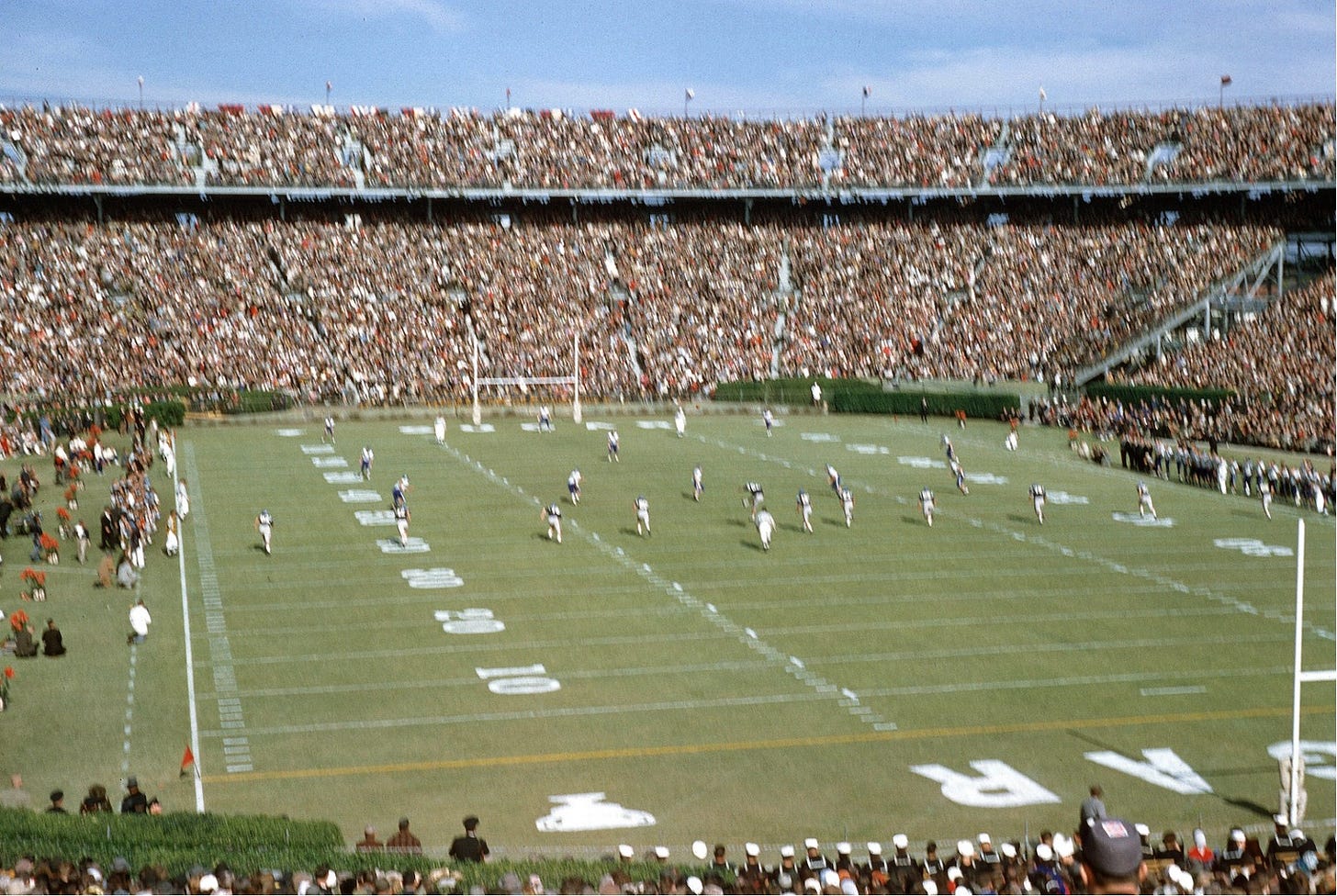Today’s Tidbit… IFA Rule #16 Goal Line
This is #16 in a series covering football’s original 61 rules adopted by the Intercollegiate Football Association in 1876. We review one rule each Friday.
As the mishmash of kicking games in the United Kingdom began separating into distinct games in the 1850s and 1860s, the Association game (aka soccer) went down a path in which the ball could not be handled (carried in the hands), with goals scored by kicking the ball under the opponent’s crossbar.
Rugby took a different route. Goals were scored by kicking the ball over the crossbar, not under, and players could handle and run with it. Running the ball across the goal line and touching it down resulted in a try (called a touchdown by the IFA).
Rule 16 adds another detail about how to score touchdowns:
Rule 16: It is lawful to run in anywhere across the goal-line.
It is a simple, unexciting, but necessary rule since it specified that runners could cross the goal line anywhere between the touchlines or sidelines. Crossing the goal line and touching it down gave the runner’s team the right to a free kick at the goal, which was critical since teams did not earn points for touchdowns yet. Goals counted, not touchdowns, though the number of touchdowns was the tiebreaker when teams scored the same number of goals. Unlike today, the spot where the runner crossed the goal line affected where the free kick occurred, but we will hold off on covering that issue until we cover Rules 29, 49, and 51.
All in all, the goal line’s function has seen little change since 1876, though there have been changes in its appearance. The goal line began as a plain white line on which stood the goal posts, but when the goal posts moved to the end line in 1927, folks thought the absence of the goal posts might cause players and fans to confuse the goal line for the 10-yard line. That led to decorating the end zone with stripes, as well as goal lines being bolded, double-striped, or painted gold. However, none of the changes to the goal line lasted, and it has returned to being a simple white stripe.
For previous stories in the series, click the link for each rule. Intro | Rules #1 Drop Kick | #2 Place Kick | #3 Punt | #4 Goal Posts | #5 Goal | #6 Goal ≠ Punt | #7: Scoring | #8: Dead Ball | #9: Touchdown | #10: Tackle | #11: Scrimmage | #12: Ball Handling | #13 Dead Ball | #14: Scrimmage Ball Handling | #15 Run In
Football Archaeology is reader-supported. Click here to buy one of my books or otherwise support the site.




